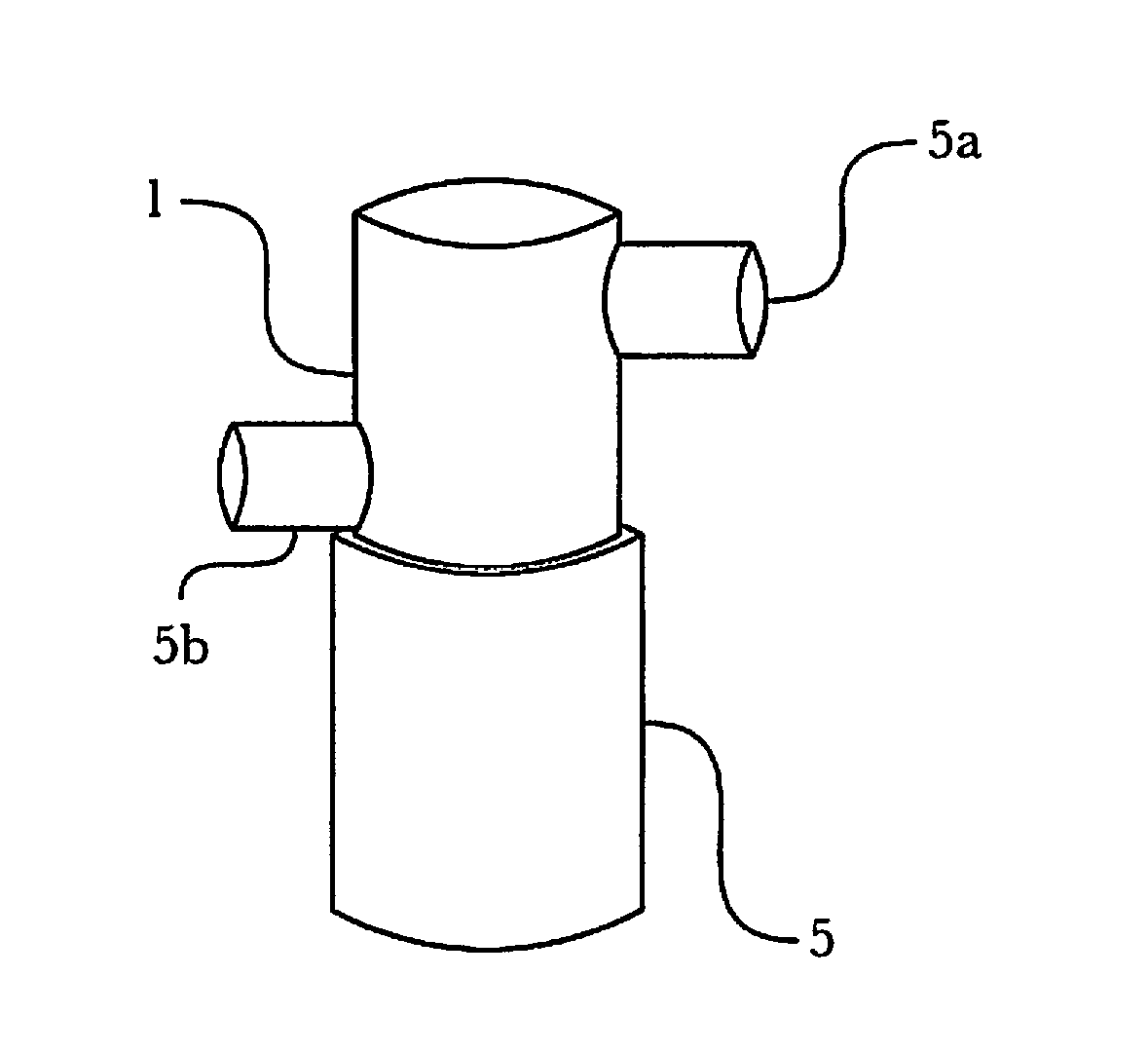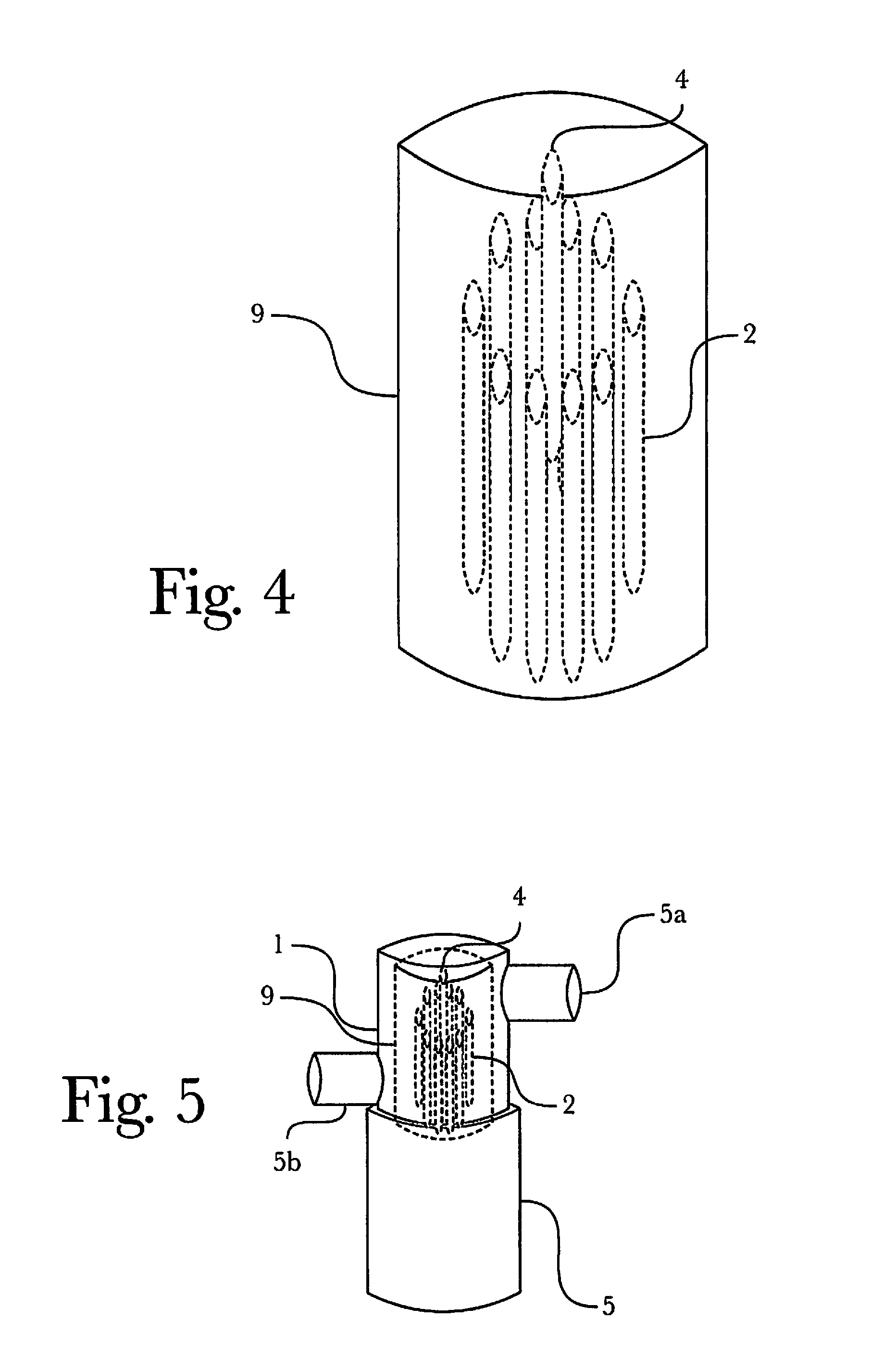Process and radiator device for wort sterilization by radiation for ethanol production
a technology of radiator device and wort, which is applied in the direction of biochemistry apparatus and processes, food preservation, water/sludge/sewage treatment, etc., can solve the problems of decrease in industrial output, and loss of yeast cells, so as to facilitate replacement or repair, the effect of preventing external radiation leakag
- Summary
- Abstract
- Description
- Claims
- Application Information
AI Technical Summary
Benefits of technology
Problems solved by technology
Method used
Image
Examples
Embodiment Construction
[0040]The inventor has conceived, and reduced to practice, in a preferred embodiment of the invention, a method and apparatus for wort sterilization by radiation for production of ethanol from sugar cane, comprising an autonomous principle that replaces the use of antibiotics, thereby eliminating this step in the process of production of ethanol from plant fluids.
Detailed Description of Exemplary Embodiments
[0041]FIG. 1 is an illustration of a wort irradiator device, according to a preferred embodiment of the invention. As illustrated, an irradiation container 1 may be installed in a drum on top of a fluid source 5 for connection via two ducts, one inlet 5a where a wort may enter such as to undergo a sterilization process and one outlet 5b such as for exiting of a wort after sterilization. According to the embodiments (and as illustrated in the following figures, below), a wort irradiator according to the invention may comprise a container 1, round rods 2 a radiation source 3, drivi...
PUM
| Property | Measurement | Unit |
|---|---|---|
| viscosity | aaaaa | aaaaa |
| pH | aaaaa | aaaaa |
| temperature | aaaaa | aaaaa |
Abstract
Description
Claims
Application Information
 Login to View More
Login to View More - R&D
- Intellectual Property
- Life Sciences
- Materials
- Tech Scout
- Unparalleled Data Quality
- Higher Quality Content
- 60% Fewer Hallucinations
Browse by: Latest US Patents, China's latest patents, Technical Efficacy Thesaurus, Application Domain, Technology Topic, Popular Technical Reports.
© 2025 PatSnap. All rights reserved.Legal|Privacy policy|Modern Slavery Act Transparency Statement|Sitemap|About US| Contact US: help@patsnap.com



